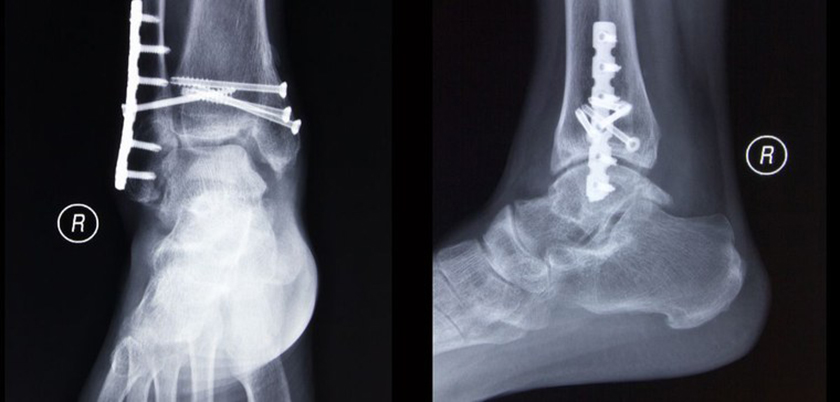Elderly patients with unstable ankle fractures could avoid surgery
Publication date: 2016
Elderly patients with unstable ankle fractures could avoid surgery, according to research by a UK team led by NDORMS at the Oxford University.

The study, published in the Journal of the American Medical Association, compared surgery to pin a broken ankle with a new plaster cast technique known as 'close contact casting'.
Researcher Professor Keith Willett, of the Nuffield Department of Orthopaedics, Rheumatology and Musculoskeletal Sciences at the University of Oxford, and the Kadoorie Centre for Critical Care Research and Education at Oxford University Hospitals NHS Foundation Trust, said: 'Older adults - those over 60 - are suffering an increasing number of ankle fractures from leading more active lifestyles and the rising prevalence of osteoporosis. However, we know that older patients have disproportionately poor outcomes, and their quality of life can suffer as they lose mobility.'
Until now, two techniques have been used to treat unstable fractures. People either received open surgery to set and then fix the bones using plates and screws, or they received a traditional plaster cast.
Professor Willett said: 'Each technique has drawbacks. Traditional plaster casts are associated with misaligned bones, poor healing and plaster sores. Surgery, especially in older people, is often complicated by poor implant fixation, wound healing problems and infection. However, a Cochrane review - considered a gold standard assessment of evidence for or against a medical technique or treatment - could not recommend preferring either treatment, as studies comparing them were of low quality.'
A new casting technique appeared to offer some advantages over both existing treatments, and a team of researchers set out to discover whether it could reduce the need for surgery while avoiding the drawbacks of traditional casts.
Close contact casting uses less padding than a traditional cast and sets the bones by being a close anatomical fit. The cast is applied by a surgeon under anaesthetic.
The study involved 620 patients at 24 UK hospitals, all of whom would usually have had surgery and who were randomly allocated to either surgery or to receive a close contact cast.
Each patient was assessed six weeks and then six months after treatment. After six months, there was no significant difference between the groups for pain, ankle motion or mobility. Patients were also given three questionnaires: the Olerud-Molander Ankle Score (specifically designed to assess progress in recovery from ankle injury) and the EQ-5D and SF-12 quality of life surveys. The average scores from these three questionnaires were also the same.
Surgery led to more adverse events, with 116 reported, compared with 71 for the close contact cast group. Close contact casting used less time in the operating theatre (around 54 minutes less per patient), though it required more outpatient consultations and use of hospital transport. The time spent in hospital and to get back on their feet was also similar.
Professor Willett said: 'Overall, this study indicates that close contact casting may be an appropriate treatment for older adults, reducing the level of resources needed for treatment and avoiding some of the common complications of surgery.'
The trial was funded by the National Institute for Health Research (NIHR).